2018 salmon forecasts unveil a mixed bag of highlights and lowlights for possible salmon fisheries 1
The Washington Department of Fish and Wildlife (WDFW) unveiled salmon forecasts, and there are some improvements peppered with returns that could restrain opportunities as fishery managers take the first steps in a lengthy process of setting fishing seasons.
“Overall Puget Sound hatchery chinook are up 21 percent based on the 10-year average,” said Aaron Dufault, a WDFW biologist.
That hatchery chinook forecast in 2018 is 227,420, which is a 35 percent increase from 2017 when the forecast was 193,962.
While that figure is rosy it appears wild Puget Sound chinook remain poor and could constrain some fisheries as roughly 26,330 are forecast to return, down slightly from last year’s forecast of 27,727.
The 2017 Dungeness chinook forecast of 373 fish created headaches for sport fishing opportunities in the Strait of Juan de Fuca (Areas 5 and 6), which was below the critical status threshold of 500 wild spawning chinook requiring a 6 percent impact limit. The 2018 Dungeness forecast is 796, and well above that level and will allow up to 10 percent impact.
Of 12 wild chinook stocks limited by ESA threatened status, all but two stocks (Skagit spring and Skagit summer/fall) have higher forecasts in 2018 than in 2017.
A glimmer of hope in northern Puget Sound is Stillaguamish River wild chinook returns (while still in the poor status range) look upbeat in 2018 with 1,600 (1,500 last year and 500 in 2016), which could hopefully avoid a skirmish over wild fish.
Elsewhere in North Sound, the Skagit forecast is 13,300 wild chinook (15,800 and 15,100), and 300 hatchery chinook (400 and 400). The Tulalip is 7,500 hatchery chinook (5,300 and 1,400). The Nooksack/Samish is 24,600 hatchery chinook (21,200 and 27,900).
“In the Green River (23,431 chinook forecast for 2018) we could have the possibility of increasing the in-river fishery as well as adding some days in the summer to Elliott Bay,” said Aaron Bosworth, a regional WDFW biologist. “We’ve got a ways to go on specific fisheries, but there is more room based on the forecast.”
Other central Puget Sound chinook forecasts are 6,222 to Lake Washington; 12,188 to Grovers and East Kitsap; and12,450 to Puyallup.
The bulk of the chinook forecast originate from southern Puget Sound where 123,600 hatchery (80,400 last year and 43,100 in 2016) and 4,800 wild (4,700 and 4,500) are expected to come back this season.
In northern Puget Sound, Snohomish is 3,500 wild chinook (3,400 and 3,300), and 6,500 hatchery chinook (4,800 and 5,000).
In Hood Canal, the hatchery chinook forecast is 57,600 (48,300 last year and 42,700 in 2016), and the wild forecast is 3,900 (2,500 and 2,300). The once popular Skokomish River king salmon fishery has been closed the past two summers due to a land dispute that prevented sport angler access to this majority hatchery production system, but fishery managers are hopeful to reinstate opportunity this year.
On the coast, fisheries managers have indicated wild chinook returns are down 23 percent, but hatchery returns are up 21 percent. Forecasts to Willapa Bay is 44,100 (38,500 last year and 39,500 in 2016); Hoh fall is 2,600 (2,700 and 1,800); and Quillayute summer/fall is 8,000 (7,600 and 7,500; Grays Harbor fall is 16,400 wild and 4,800 hatchery fish. Forecasts weren’t available for fall chinook in the Queets and Quinault.
There’s a feeling of mixed blessings for Puget Sound coho in 2018, and could have the potential to increase fishing opportunity in areas that have been closed since 2015.
“The 10-year average for coho is 600,500, and this year relative to that average were still digging ourselves out for coho (and) we are down 6 percent from 2017 for projected coho returns,” Dufault said.
The expected Puget Sound hatchery coho return is 557,149 (595,074 last year and 249,174 in 2016).
The forecast for five wild coho stocks that drive Puget Sound sport fisheries are the Strait of Juan de Fuca (8,391 for 2018 and 14,489 last year); Skagit (59,196 and 11,160) up 350 percent; Stillaguamish (18,950 and 7,622) up 150 percent; Snohomish (65,925 and 107,325); and Hood Canal (61,104 and 120,297).
In 2017, forecasts for two of these wild stocks – Skagit and Stillaguamish – determined the very restrictive sport fishery for Straits, San Juan Islands, east side of Whidbey Island, and northern and central Puget Sound (Areas 5, 6, 7, 8, 9 and 10).
A combined coastal coho return is 270,756 compared to 298,651 last year. A breakdown is 65,187 (91,718 last year) to Willapa Bay; 93,793 (86,398 to Grays Harbor; 55,064 (55,735) to Quinault; 17,778 (20,199) to Queets; 5,816 (6,198) to Hoh; and 6,056 summer (4,844) and 27,062 fall (33,427) to Quillayute.
Poor Fraser River wild coho have also been an ongoing issue to Washington’s sport fishing in the Strait of Juan de Fuca and northern Puget Sound consistent with conservation objectives and sharing of limited allowable impacts allocated to the U.S.
Ocean salmon fisheries could be affected by a downward trend in 2018 for chinook and coho. A total fall chinook forecast of 365,000 is about half of the 10-year average and falls below the 582,600 forecast and actual return of 475,900 last year.
The Columbia River chinook forecast is 112,500, which is down in 50 percent from last year. Hatchery chinook known as “Tules” and other lower river chinook stocks are the backbone of ocean fisheries.
The “upriver bright” chinook return of 67,300 (53,100 last year) to Columbia above Bonneville Dam are also down more than 50 percent of the most recent 10-year average.
A forecast of 286,200 coho are forecast to return to Columbia River in 2018, which is down almost 100,000 fish from last year. About 279,300 actually returned last year where some coho stocks are listed on the Endangered Species Act.
“Coho have the same issues as last year (and) that could potentially constrain the ocean fisheries,” said Wendy Beeghly, a WDFW coastal salmon manager. “The Queets could be a factor as it will be listed as overfished in 2018.”
For other salmon species like sockeye, the Baker River forecast of 35,002 will fall in the neutral category, and lower than last year’s forecast 47,000 and 55,054 in 2016.
While down in 2018 the Baker sockeye figure is up 20 percent compared to the 10-year average, and should be enough to consider some kind of summer sport fisheries in Baker Lake and possibly the Skagit River.
The Lake Washington forecast remains dismal with 39,875 (77,292 last year and 119,125 in 2016). The last time a fishery occurred in the lake was 2006, and it appears the downward trend will remain the same for years to come.
The Wenatchee River sockeye forecast is 25,700 (54,200 last year), and Okanogan River sockeye forecast is 72,600 (137,000).
In British Columbia the Fraser River sockeye return is 13,981,000 up from 4,432,000 last year. These fish could be easy game for anglers fishing in the Strait of Juan de Fuca on the U.S. side of the border as they intermingle with local stocks, but the challenge has been figuring out how to catch them in marine areas.
The Puget Sound chum forecast of 1,216,031 – includes 497,400 to Hood Canal and 395,359 to southern Puget Sound – falls just below the 1.5-million 10-year average, but is still a very return that should produce some glory moments for anglers in the fall and early winter.
At the meeting, Marisa Litz with the WDFW fish program management division offered a power-point on ocean conditions.
The warm “blob” that plagued the North Pacific from late 2013 to 2015 has dissipated, returning sea surface temperature anomalies to more normal levels.
The El Nino of 2015-2016 is also officially over and we are in an ENSO neutral state, meaning that the equatorial Pacific does not have abnormally high or low SST anomalies (the signature of El Nino/La Nina).
This typically means that ocean conditions in the Pacific Northwest will be favorable for salmon of all life stages with cooler than average air/ocean temperatures and more precipitation. Although some climate models are indicating below average temperatures, precipitation may just be average for the winter.
Litz says the current snowpack through February was at 100 percent, which will benefit out-migrating juvenile fish with improved stream flows and cooler water temperatures.
Meeting dates to set the salmon fishing seasons:
March 9-14: Pacific Fishery Management Council Meeting at DoubleTree by Hilton Sonoma, One Doubletree Drive, Rohnert Park, Calif. The PFMC adopts a range of ocean fishery options, including catch quotas for sport and commercial fisheries – see agenda.
March 15: Puget Sound Recreational Fisheries Discussion, 7 p.m. to 9 p.m. at Trinity Methodist Church, 100 S. Blake Ave., Sequim. Public discussion of pre-season forecasts and possible salmon fisheries.
March 19: Columbia River Fisheries Discussion, 9 a.m. to 3 p.m.; Room 102A of Region 5 Headquarters, 5525 S. 11th St., Ridgefield. Public meeting to present results of state-tribal negotiations and analyses of Columbia River fisheries proposals. With public participation, preferred seasons are developed for the Columbia River area sport and commercial fisheries.
March 19: Grays Harbor Fisheries Advisory Group, 6 p.m. to 8 p.m.; Large Conference room, Region 6 Headquarters, 48 Devonshire Rd, Montesano. Grays Harbor Advisory Group discussion of pre-season forecasts and possible salmon fisheries; meeting is open to the public.
March 20: First North of Falcon Meeting, 9 a.m. to 3 p.m.; DSHS – Office Building 2 Auditorium, 1115 Washington St SE, Olympia. Discussion of management objectives and preliminary fishery proposals for sport and commercial fisheries in Puget Sound and coastal Washington, with limited discussion of the Columbia River and ocean fisheries.
March 22: Willapa Bay Fisheries Advisory Group, 6 p.m. to 8 p.m.; Large Conference room, Region 6 Headquarters, 48 Devonshire Road, Montesano. Group discussion of pre-season forecasts and possible salmon fisheries; meeting is open to the public.
March 26: Public Hearing on Ocean Salmon Management Options, 7 p.m. at Chateau Westport – Beach Room, 710 W. Hancock, Westport. Take comments on the proposed ocean salmon fishery management options adopted by the council during its early March meeting.
March 27: Mid-Columbia/Snake rivers Fisheries Discussion, 6 p.m. to 8 p.m. at Walla Walla Community College, Clarkston Campus Auditorium, 1470 Bridge St., Clarkston. Public discussion of management objectives and preliminary options for Columbia River sport fisheries.
March 27: Puget Sound (South Sound – Hood Canal) Recreational Fisheries Discussion, 6 p.m. to 8 p.m.; Lacey Community Center, 6729 Pacific Ave. SE, Olympia. Public discussion of pre-season forecasts and possible salmon fisheries.
March 27: Grays Harbor Fisheries Discussion, 6 p.m. to 8 p.m.; Montesano City Hall, 112 N. Main St., Montesano. Public meeting for discussion of pre-season forecasts and possible salmon fisheries in Grays Harbor and associated watersheds of the Humptulips and Chehalis rivers.
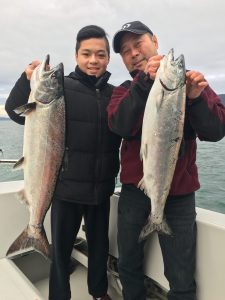
Tegan Yuasa and father Mark Yuasa with a pair of nice hatchery chinook they caught in San Juan Islands on Jan. 6.
March 28: Mid-Columbia River Fisheries Discussion, 6 p.m. to 8 p.m.; Chelan PUD, 327 N. Wenatchee Ave., Wenatchee. Public discussion of management objectives and preliminary options for Columbia River sport fisheries.
March 28: Puget Sound Recreational Fisheries Discussion, 6 p.m. to 8 p.m.; Region 4 Headquarters Office, 16018 Mill Creek Blvd., Mill Creek. Public discussion of pre-season forecasts and possible salmon fisheries.
March 29: Columbia River Public Meeting, 6 p.m. to 8 p.m.; Kennewick Irrigation District – Boardroom, 2015 S. Ely Street, Kennewick. Public discussion of management objectives and preliminary options for Columbia River fall commercial and sport fisheries.
March 28: Willapa Bay Fisheries Discussion, 6 p.m. to 8 p.m.; Raymond Elks Club, 326 3rd St., Raymond. Public discussion for discussion of pre-season forecasts and possible salmon fisheries in Willapa Bay and its associated watersheds.
April 2: Columbia River and Ocean Fisheries Discussion, 10 a.m. to 3 p.m.; Room 102A, Region 5 Headquarters – 5525 S 11th St., Ridgefield. Public meeting to present results of state-tribal negotiations and analyses of ocean and Columbia River fisheries proposals. With public participation, preferred seasons are developed for ocean and Columbia River area sport and commercial fisheries.
April 3: North of Falcon Meeting, 9:30 a.m. to 5 p.m. at Lynnwood Embassy Suites, 20610 44th Ave. W., Lynnwood. Public meeting to present results of state-tribal negotiations and analyses of preliminary fishery proposals. With public participation, preferred options are developed for Puget Sound sport and commercial fisheries.
April 6-11: Final Pacific Fishery Management Council Meetings at Sheraton Portland Airport Hotel, 8235 NE Airport Way, Portland, Ore. PFMC adopts final ocean fisheries regulations and state-tribal fishing plans are finalized for all inside area commercial and sport salmon fisheries.


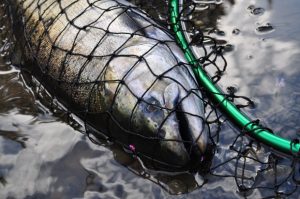
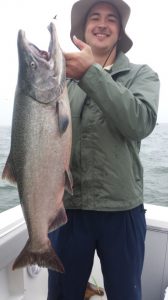
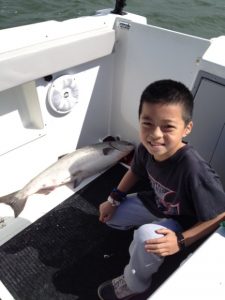
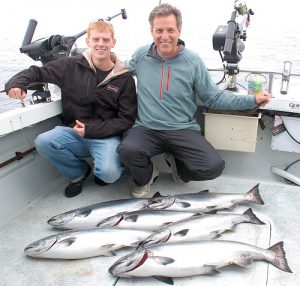
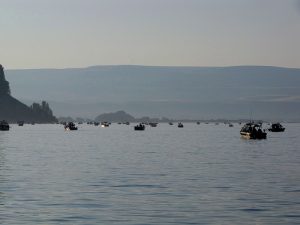
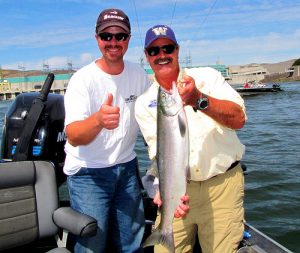
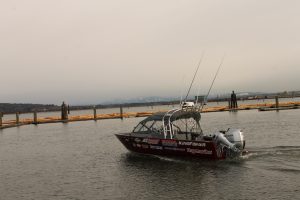
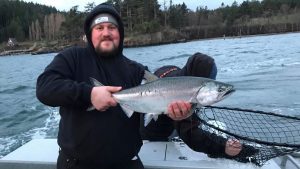
Nice job Mark